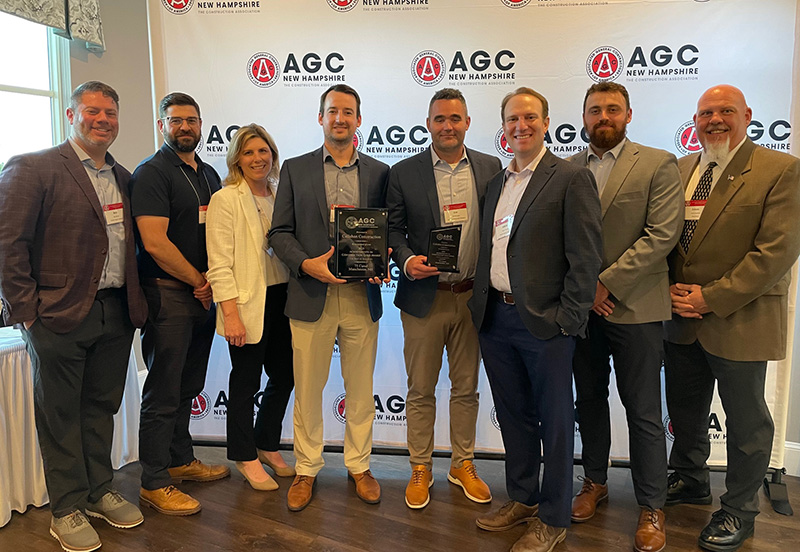News: Construction Design & Engineering
Posted: September 18, 2007
The restoration of historically significant building exteriors that feature precast stone construction
The restoration of historically significant buildings is an important, highly specialized construction craft that enables the preservation of both the structural and architectural integrity of publicly and privately owned structures.
Background on historic
structures that feature
precast stone architecture
and construction
In New England, numerous historically significant buildings, built in the early 20th century, feature exterior architecture with both structural and architectural elements constructed of precast stone. These building exteriors can typically include such precast stone elements as stairways, rails and entrances, balustrades, cornices, and medillions, while other portions of these buildings exteriors are infilled with brick masonry.
What is precast stone and why is it used? Precast stone is a cementitious product comprised of fine and coarse aggregates - such materials as limestone, marble, calcite, granite, quartz, natural sands, Portland cement, coloring pigments, chemical admixtures, and water. As building construction evolved, technological advancements made it possible to utilize this type of engineered structural element in lieu of natural stone elements that comprise part of the building's exterior architecture.
Precast stone is typically utilized in facility construction for economic,engineering and architectural reasons. Benefits of its use are significant. Precast stone simulates the look of natural stone, and through the introduction of specific types of aggregate, it can provide appropriate color and texture. It is poured and cured so as to give it a hand-cut look of natural stone. It also features a dense finish, resistant to weather and dirt.
The engineered mix is poured with the introduction of steel reinforcement to increase loading capacity and meet structural requirements of the building. The manner in which the elements are mixed and cured is critical in achieving standards that meet stringent engineering and architectural specifications.
The key to the restoration of a historically significant facility that utilized precast stone as an original building material is the skill and experience of the contractor and artisans in their replication of the engineered precast elements and their installation, so as to retain both the structural and architectural integrity of the building.
Recommendations for
long term preservation
Over years, brick masonry, and precast stone details (stairways, balustrades, railing and balustrade systems) withstand long-term exposure to the elements such as rain, snow, ice, and freeze/thaw cycles. This exposure causes water infiltration and building damage, first to the exterior and then to the interior of the facility. It is recommended that buildings that feature precast stone construction be inspected on a periodic basis by qualified professionals, prior to the onset of significant deterioration. Because of the unique nature of these buildings and the high cost of restoration, it makes economic sense to have buildings inspected on a regular basis, every year or two. As soon as precast deterioration is evident, it is wise to call in a specialty contractor to evaluate the problem and provide a maintenance solution to ensure long-term performance and preservation.
Dennis Kulesza is the president of Metropolitan Restoration & Waterproofing Corp., Boston, Mass.
MORE FROM Construction Design & Engineering
Nobis Group awards Robinson and Moreira STEM scholarships
Concord, NH Nobis Group, a 100% employee-owned consulting firm specializing in engineering and environmental solutions across the Northeast, has named the recipients of its 2025 STEM Scholarship: Andie Moreira of

Quick Hits
Columns and Thought Leadership

Careers in Construction Month focus on training and safety - by Joe Camilo
October is Careers in Construction Month, and rarely has it been more consequential. According to our chapter’s national parent organization, the construction industry needs to attract half-a-million new workers in the coming year to meet demand. Addressing that need is a huge job, but we at ABC MA are trying to do our part.

The rise of incubators and co-working spaces: The latest in life sciences - by Matt Combs
In recent years, the life science industry has witnessed a shift in how companies operate and innovate. One of the key driving forces behind this transformation is the emergence of incubators and co-working spaces specifically tailored to meet the unique budget and schedule needs of startups.

Ask the Electrician: Is summer a prime time for commercial electrical maintenance?
The answer is “Yes!” While January marks the official new year, many businesses view September as a fresh start. This makes summer an ideal time for commercial property owners to schedule long-term electrical maintenance projects.

The design-build advantage: Integrated interior design solutions - by Parker Snyder
When it comes to corporate interior spaces for both commercial and industrial projects, partnering with a design-build firm with in-house interior design services can offer clients many benefits. Unlike traditional delivery methods where interior designers operate independently from the design and construction teams, often creating a longer project timeline as cost negotiations and revisions ensue







